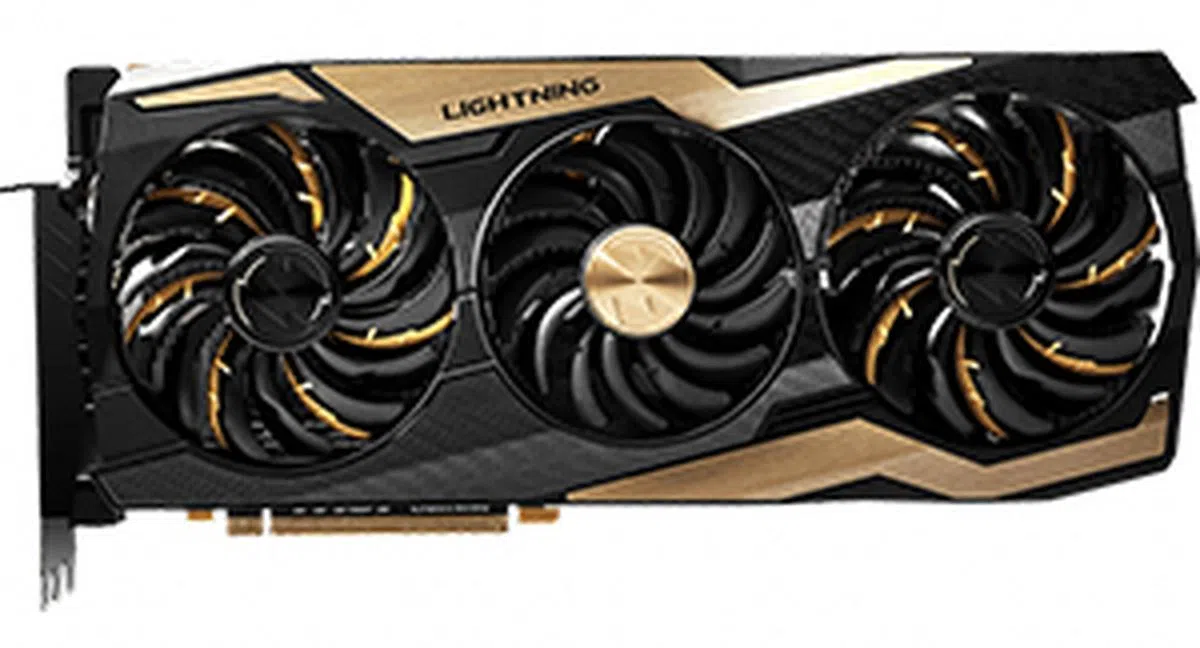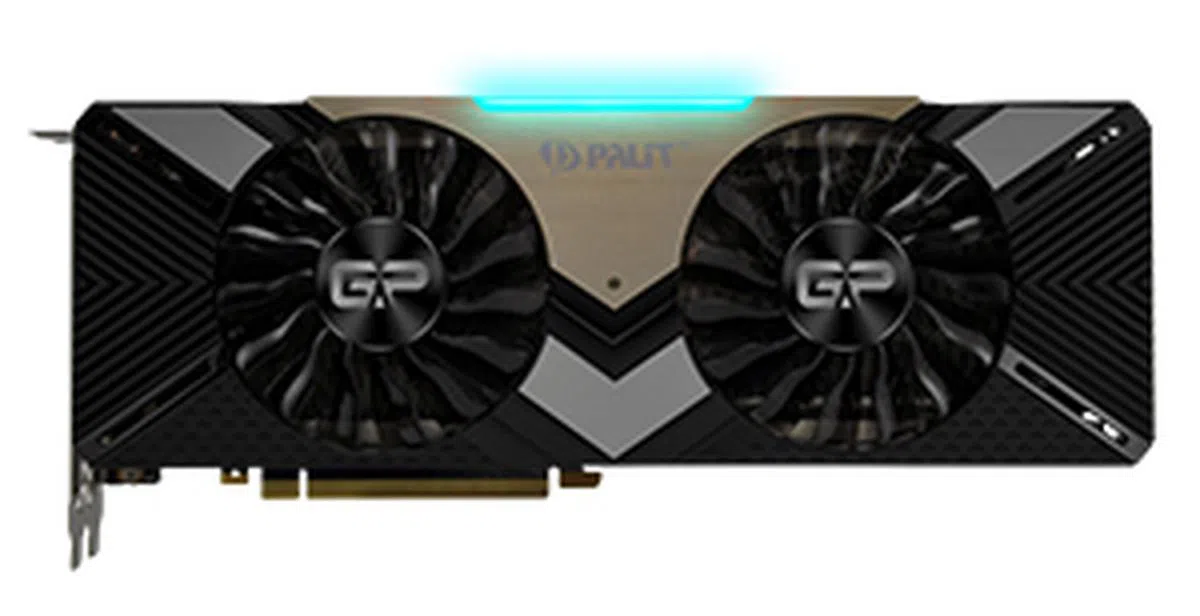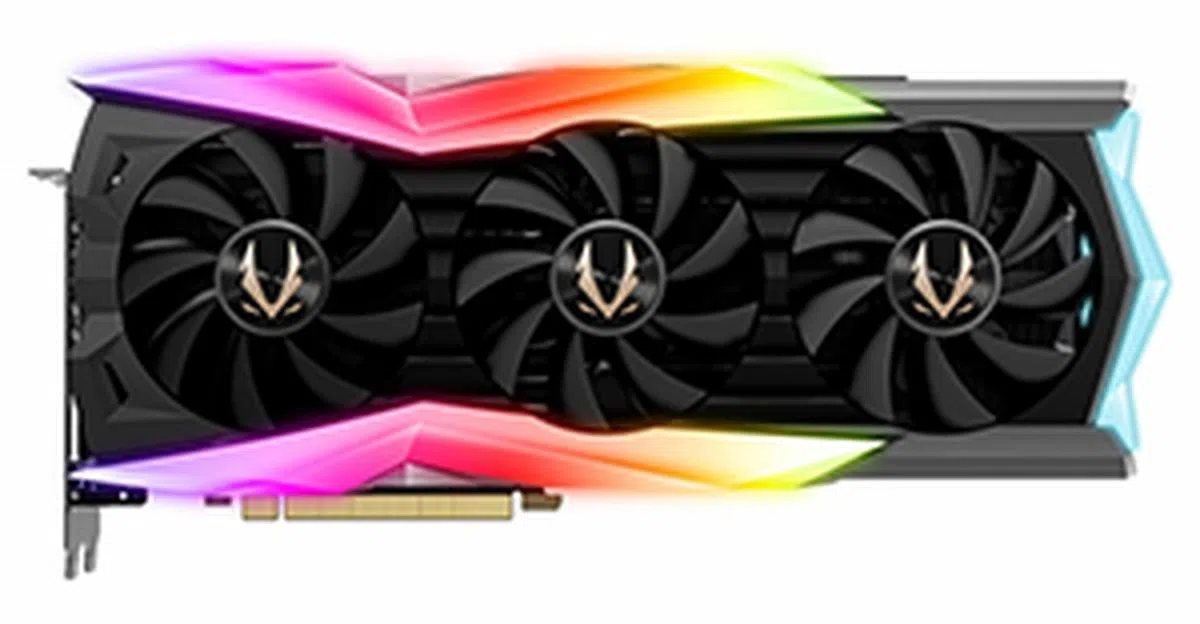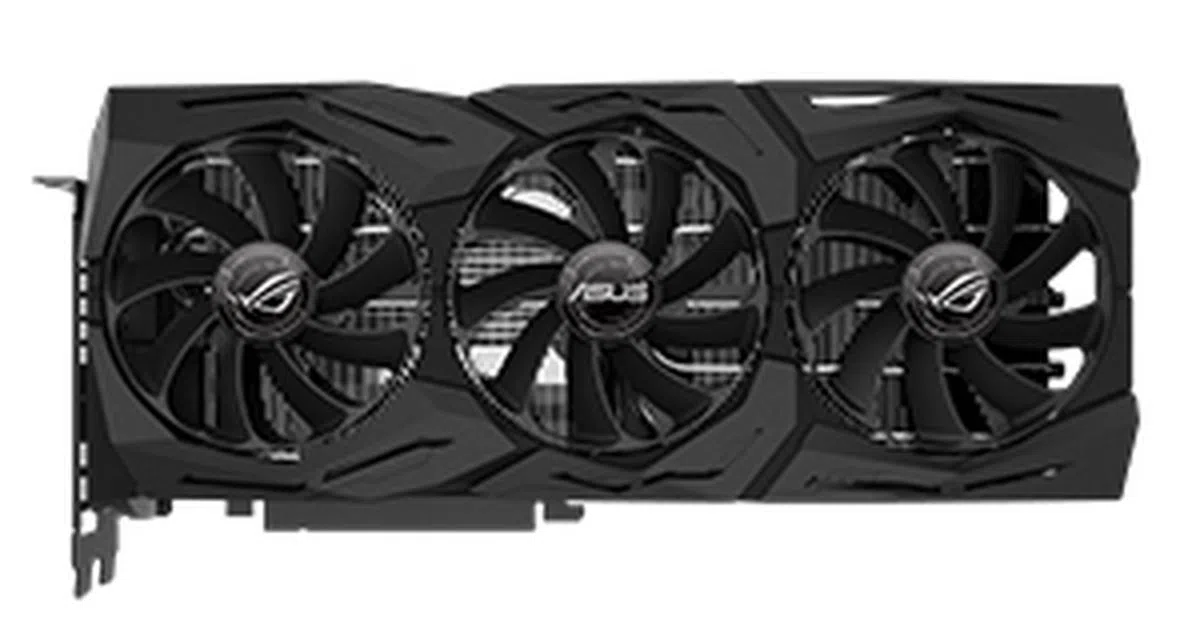NVIDIA GeForce RTX 2080 Ti shootout: These are the fastest cards on the planet
The NVIDIA GeForce RTX 2080 Ti is the fastest consumer graphics card you can buy today. But which custom card should you get? We tell you.
Note: This article was first published on 8th February 2019.
Who’s the best of the best?
The NVIDIA GeForce RTX 2080 Ti is one of the most expensive consumer graphics cards NVIDIA has released in a while. It serves up bleeding-edge performance and comes with the latest ray-tracing technology baked in, but the steep price it commands means that this isn’t a card for the average gamer.
Put simply, this is a card for those who are sure that they want the best and are willing to pay for it. While the Founders Edition model is a beauty in its own right, custom card manufacturers have gotten to work installing massive coolers and working in their own factory overclocks.
This means cards that are slightly faster and cooler, complete with fancy add-ons like RGB lighting, and in some cases, even customizable OLED displays.
In this shootout, I’ll be looking at cards from ASUS, GALAX, MSI, Palit, and Zotac to try to tease out which GeForce RTX 2080 Ti you should get. Unfortunately, Gigabyte chose not to take part in this shootout, which is why they’re not being featured.
ASUS ROG Strix GeForce RTX 2080 Ti Gaming OC

This is one of the more subdued-looking cards in this shootout.
The ASUS ROG Strix GeForce RTX 2080 Ti Gaming OC is basically the same card as the ROG Strix GeForce RTX 2080 OC I reviewed previously. The GeForce RTX 2080 Ti version is ever so slightly longer, but they’re otherwise indistinguishable if you’re not squinting at the labels.
This means that a lot of what I said about the ROG Strix GeForce RTX 2080 Gaming OC applies here as well. This is a premium card that’s been crammed with nearly everything you could want, and it comes with a couple of unique features that help to improve the overall user experience.
The massive triple fan cooler does an admirable job of keeping the card cool, and ASUS says that it has managed to increase the available surface area on the finned heat sink by over 20 per cent compared to the previous generation. The company’s MaxContact Technology makes a return here as well. This refers to ASUS’ use of precision machining to create a heat spreader surface that is flatter than competing solutions. This increases the total contact area between the GPU and the contact plate, which should also improve heat dissipation.
The cooler is super thick and requires a nearly 3-slot allowance, so be sure to make sure that you’ve enough space in your chassis for this.

The ROG logo on the backplate lights up as well.
But as with any card that’s this large and heavy, a big concern would be structural integrity. Fortunately, ASUS has made attention to this area, and the card feels really robust and well put together. There’s even a hefty metal brace that’s mounted to both the backplate and I/O shield, which helps reinforce the PCB and prevent bending.

The metal brace runs along the card's side and helps reinforce it.
This card never gets unbearably loud, but the onboard dual BIOS switch provides an easy way to reduce noise levels if you need to. There are two different modes, performance and quiet, but the card ships in performance mode by default. Quiet mode also supports semi-passive operation for the fans, where they will stop spinning when GPU temperatures fall below 55°C, but you can enable this in performance mode if you have the GPU Tweak II software installed.

The onboard BIOS switch lets you toggle between Performance and Quiet modes.
Both modes share the same power target settings, but performance mode adheres to a more aggressive fan curve for better cooling performance.
With this generation of cards, ASUS has also switched to new axial-tech fans that provide higher air flow and greater static pressure. These fans also have a smaller fan hub to allow for longer blades and a barrier ring that increases structural integrity and downward air pressure so air can be pulled over the thick heat sink more effectively. Furthermore, they are IP5X dust resistant and the numbers in the results page will speak to just how well ASUS’ entire thermal design works.

A closer look at the axial-tech fans.
On the overclocking front, the card uses a 16+3-phase power design, compared to the 10+2-phase design on the ROG Strix GeForce RTX 2080. In OC mode, it has a base clock of 1,350MHz and boost clock of 1,665MHz. On paper, this is far from the most aggressive factory overclock among custom 2080 Ti cards, but the good news is that you don’t actually see that much of a difference in real-world benchmarks.
Having said that, the card ships in Gaming mode, with a lower 1,650MHz boost clock, and I do wish that OC mode would be enabled by default. Instead, you have to download ASUS’ GPU Tweak II software to enable it.
The cooling shroud is adorned with segments of RGB lighting, but I consider the card’s design to be quite subdued compared to the rest of the competition. But if you want an even more stealthy look, there’s also a button on the backplate of the card to let you quickly turn all the LED lights on or off. That’s not super useful if the card is going to be in your chassis most of the time, but I do appreciate it being there. On top of that, there’s a 4-pin header for connecting a third-party LED strip. If you use something from ASUS’ Aura ecosystem, you’ll be able to control all the lighting through the Aura software.

The RGB header is located at the front of the card.
The card comes with two additional 4-pin fan headers as well. These FanConnect II headers, as ASUS calls them, will work with both PWM and DC spinners. Fans hooked up to these headers can be pegged to your GPU temperatures instead of just the CPU, which is probably more useful during intense gaming sessions. However, you'll see that the headers are actually missing in the picture above. That's because the initial batch of the ROG Strix GeForce RTX 2080 Ti Gaming OC omits these headers due to some technical issues, but future production batches will include them.
The display outputs are slightly changed from the Founders Edition model. Instead of three DisplayPort and one HDMI output, ASUS has gone with two of each type (the VirtualLink USB-C port remains unchanged).

Here's a look at the display outputs at the rear.
Finally, there are just two 8-pin power connectors, the same as on the Founders Edition card. Two helpful LED indicators will turn white once a successful connection has been established, which should help rule out loose connections when troubleshooting.

The card is powered by two 8-pin connectors.
GALAX GeForce RTX 2080 Ti Hall of Fame

This card will fit right into your white-themed build.
The GALAX GeForce RTX 2080 HOF edition card has such an over-the-top design, it’s almost hilarious. For better or worse, this is probably one of the flashiest custom cards around, and it’s almost definitely designed for those who know that they’ve bought the king of cards and want others to know it too.
I mean this quite literally, because GALAX has made the frame around its LCD screen removable, and you can replace the default option with nothing less than a golden crown. This is bundled together with the card, which also ships with a range of accessories, not all of them necessary. This includes an acrylic bracket to support the GPU in its case and a pair of presumably anti-static gloves.

The card ships with a supporting acrylic bracket.
Unfortunately, the crown in question kind of cheapens the entire feel of the card. Furthermore, it’s not so much a problem with the design as the materials and construction. The entire thing just feels like cheap plastic, and the paint work seems like it’s just waiting to chip off. The HOF edition is a premium card, and I don’t think it’s too much to expect its bundled accessories to live up to the same standard.

This feels a little excessive.
That said, the white ceramic finish on the card is truly striking, and it’ll fit in really nicely with white-themed builds, but probably without the golden crown. Even the PCB is white, and it’s a small touch that goes a long way toward creating a cohesive look and feel. The build quality of the card is good but not amazing, and I couldn’t help but notice certain imperfections on the LCD screen. Nevertheless, the display can show useful information such as temperature, fan speeds, and GPU voltage, so I can definitely see it coming in handy. In addition, you can set it to display custom logos or text using GALAX’s HOF AI software.

The frame around the LCD screen can be removed.
GALAX is also keen to highlight the new features of its AI software. According to the company, the software can now intelligently adjust fan speeds to reduce noise and improve cooling performance. The HOF AI panel has been redesigned, and it now features a cleaner UI and dials that mimic that of a race car dashboard. The card ships in a so-called Intelligent mode by default, and you’ll have options for quiet or performance presets.

The backplate is all white as well.
In addition, there is a Temperature Priority mode that lets you define specific low and high temperature points and fan speeds that the AI processor can take cues from. However, this feature will require you to run the HOF AI software in the background, whereas the Intelligent mode does not. What’s interesting is that GALAX says that it’s using a custom processor for these AI functions, and it’s not entirely software-based.
A button at the rear of the card also lets you quickly set the fans to run at full speed, where they kick up quite a din. The only time you’ll want to use this is probably during overclocking, as the fans are really, really noisy when they’re at 100 per cent. Still, the button is useful, and it’s located next to the display outputs where it can be accessed easily without having to open up your case.

The fan speed boost button sits beside the display connectors.
The card uses a 16+3-phase digital power supply to better support overclocking, the same as the ASUS card. The PCB is sandwiched between a metal frame and the backplate, which should help reinforce it and guard against flexing. The massive fin array is paired with six heatpipes and a copper contact plate to help channel heat away from the GPU.

You can see here the metal plate between the backplate and PCB.
The HOF card also features no fewer than three 8-pin power connectors. This is nearly bordering on overkill, but it’ll definitely ensure that your card gets enough power when you’re pushing it really hard. Strangely enough, however, it doesn't ship with any factory overclock at all, featuring a 1,350MHz base clock and 1,635MHz boost clock.

The three 8-pin power connectors are located at the front.
Finally, the card is outfitted with the same selection of display outputs as the Founders Edition model, comprising three DisplayPorts, one HDMI, and one USB-C port.
MSI GeForce RTX 2080 Ti Lightning Z

This card kind of just oozes luxury.
MSI’s Lightning Z card represents yet another step up from the already impressive Gaming X Trio series, and it’s quite the looker. You sometimes hear about products that have been over-engineered for regular use cases, and the GeForce RTX 2080 Ti Lightning Z is a prime example of that.
For starters, it features a new color scheme and a swanky backplate that is 90 per cent carbon. The carbon fiber detailing isn’t just for show, and the backplate’s construction supposedly helps make the card thinner and stronger. Still, this is by no means a thin card though, and you’ll still require a 3-slot allowance for it. It’s difficult to get excited about custom cards these days since they more or less bring the same thing to the table, but this is one card that looks like something special.

The carbon fibre pattern isn't just for show.
The black-and-gold cooling shroud really adds to the X-factor of the card, and it’s a rather striking change coming from the staid silver-and-black design of the GeForce GTX 1080 Ti Lightning Z.
The new Lightning Z boasts a base clock of 1,350MHz and boost clock of 1,770MHz, which is the highest of all the cards in this shootout. The gargantuan triple-fan cooler features three Torx 3.0 double ball bearing fans for greater longevity, The fans comprise two 100mm and one 90mm spinner and are designed to channel air more effectively through the finned heatsink. They use a mix of dispersion and traditional fan blades, where the former has a special curved blade that accelerates airflow while the protrusions on the latter push air down to the heat sink for better static pressure.

The Torx 3.0 fans feature a mix of dispersion and traditional fan blades.
The heatsink itself also has what MSI calls “rugged-edge” fins that supposedly guide air through the heatsink more smoothly, thus resulting in less noise. In addition, the heatsink is paired with an array of two 8mm and six 6mm copper heat pipes that help dissipate heat throughout the entire fin array.
In fact, MSI claims that its design is capable of up to 700W of heat dissipation. The heat pipes don’t touch the GPU die though, and the card has a solid nickel-plated copper base plate that makes contact with the GPU instead, which seems to be the more popular approach today. According to the company, the heat pipes are also arranged very close together at the point where they touch the base to improve the efficiency of heat dissipation.
A separate metal plate sits between the heat sink and the PCB, and this makes contact with the VRM and memory components to help draw heat away from them as well. On top of that, the plate should further help reinforce the PCB and prevent bending. To cap things off, there’s even a heat pipe on the carbon backplate, so MSI is clearly leveraging everything it can here and the thermal system really looks quite robust.

You can see here the thick heatsink and metal plate.
All told, the Lighting Z is a really large and heavy card, but MSI has also included a metal bracket if you want extra support for it in your case.
The card utilizes a 19-phase power design and three 8-pin connectors, so there’s no doubt that it was built for overclocking as well. Just as on the GALAX card, this amounts to up to 525W of power.

The card has three 8-pin power connectors.
One unique feature is the introduction of a BIOS switch that lets you switch between normal and LN2 modes. In LN2 mode, the power limit is raised to 350W, which should appeal to professional overclockers. In addition, the clock speeds also default to reference speeds, so overclockers can make adjustments by themselves.
There is one quirk about the LN2 mode though. MSI’s coolers usually support semi-passive operation by default, but this is not the case with the Lightning Z. Instead, the Zero Frozr feature is only active in LN2 mode, which is weird because it’s not like anyone is going to attempt LN2 overclocking with the fans still on.
That said, MSI has paid considerable attention to the card's appearance as well. The fans sport an impressive selection of visual customizations, where you can control the colors and choose how many fan blades will be perceived. In addition, there's a Dynamic Dashboard OLED display that can display real-time information or custom animations.

The OLED display at the side can display custom text and logos.
What’s more, there are addressable LEDs at the tips of the fan blades, which provide some pretty unique effects depending on things like fan speed. However, that’s probably also why the card no longer offers semi-passive operation by default, because these LEDs wouldn’t look good when the fans are not spinning. That said, the smaller middle fan doesn’t have any LEDs at all, a pretty odd decision.
Finally, the Lightning Z has the same selection of display outputs as the Founders Edition model, featuring three DisplayPort, one HDMI, and one USB-C port.

The display outputs are the same as on the Founders Edition card.
Palit GeForce RTX 2080 Ti GamingPro OC

Palit has just stuck with a dual-fan cooler this time around.
Palit’s GamingPro line of cards is a new series that the company introduced alongside the launch of NVIDIA’s GeForce RTX 20-series cards. Like the other cards in this shootout, it features a massive cooler that will require a 3-slot allowance in your chassis, the better to cool the TU102 GPU under the hood.
At S$1,799, this is the most affordable card in a shootout where everything else costs over S$2,000. However, as you’re probably already able to tell by the price, the GeForce RTX 2080 Ti GamingPro OC is considerably more spartan than its competitors, featuring fewer of the bells and whistles that the other cards are armed with.
To start things off, the card is equipped with a 1,350MHz base clock and 1,650MHz boost clock. It also uses a 13+3-phase power design, which isn’t as comprehensive as the competing solutions on other cards. Build quality is decent, but it still feels slightly wanting when compared against the other cards, and especially when set beside NVIDIA’s Founders Edition model. I should think that most folks buy custom cards expecting an upgrade over NVIDIA’s model, but the GamingPro OC really doesn’t feel like a step up in this respect.

The cooling shroud sports a brushed metal finish as well.
Still, it does come with a brushed metal backplate that shows off the GPU die. The backplate helps reinforce the PCB and prevent flexing, and there are smaller metal plates that interface with the VRM and memory components via thermal pads to provide an additional degree of passive cooling. The backplate itself also has thermal pads that allow it to channel some heat away from the PCB components.

Here's a look at the card's backplate.
Palit is also using a copper base plate to interface with the GPU and whisk heat away to the heat pipes and the fin array.
However, the card is still missing the full-length metal plate between the PCB and heat sink found on some of the other cards that could further shore up the circuit board.

You can see that there's no full-length metal plate between the backplate and PCB.
The cooler is a rather modest affair compared to the triple-fan contraptions on its rivals. It features just two 90mm fans, but Palit says these have been designed for optimal airflow and static pressure.
The display outputs are the same as on the Founders Edition model, comprising three DisplayPort, one HDMI, and one USB-C port. The outputs are also set on Palit’s usual honeycomb mesh, which supposedly provides better airflow out the rear of the card.

The honeycomb mesh at the rear helps facilitate airflow out the back of the card.
Zotac GeForce RTX 2080 Ti AMP Extreme Core

The LED effects on this card turned out pretty nicely.
The Zotac GeForce RTX 2080 Ti AMP Extreme Core is quite the attention grabber. If I had to use one word to describe it, it would be fun, and the card quite nicely walks the line between appealing to RGB fiends and just being a gaudy monstrosity.
The fat RGB lighting strips are the first thing you notice when you look at it, and they stick out above the card instead of sitting in discreet recesses like on the ASUS ROG Strix GeForce RTX 2080 Ti Gaming. I don’t mean this in a bad way, and when the card whirrs to life, it’s quite something to look at. Of course, I don’t expect this to appeal to everyone, and this is very much a matter of personal preference.
That said, the company has outfitted the card with addressable LEDs and four individual lighting zones, which you can customize in Zotac’s Spectra 2.0 software. The addressable LEDs enable more dynamic lighting effects as well, so Zotac has done good on this front and produced one good-looking card.

The card features addressable LEDs for better-looking effects.
Zotac also makes an AMP Extreme version of the card, but the two are identical save for the higher clock speeds on the latter. The AMP Extreme Core has a base clock of 1,350MHz and boost clock of 1,755MHz, which is already pretty aggressive. It’s second only to the MSI card, and is a really nice factory overclock to have out of the box. In addition, this is the only card in this shootout to come with a small bump to its memory frequency, clocking in at 1,800MHz instead of 1,750MHz.
The AMP Extreme Core features a triple-fan cooler with a faceted design and a metal backplate with a matte finish. One unique feature is how the backplate sort of wraps around the sides of the card in certain places, including the front end. This hides some of the heat sink array from view, and I think it fits in with the overall aesthetic of the card and helps create a more robust feel. However, it’s possible that this design may contribute to heat being trapped in the card, although there are vents on the backplate to facilitate airflow.

You can see the PowerBoost chip through a cutout on the card's backplate.
Build quality is pretty good, and the card uses a 16+4-phase power design, which should be good for overclocking. It also comes with an onboard PowerBoost control chip that supposedly helps provide live electrical current regulation and reduce ripple noise and power fluctuations.

The backplate wraps around the sides of the card.
The fans can be controlled independent of one another, and you can set different speeds for each of the three fans. In addition, they support semi-passive operations, and will stop spinning when the GPU temperature falls below 55°C. Unfortunately, the fans can get pretty loud at times.
On the cooling front, Zotac uses a thick aluminum fin stack in combination with five 8mm copper heatpipes. The heat pipes don’t make direct contact with the GPU though, and the card also features a copper base plate for this purpose. On top of that, a diecast metal jacket sits between the heat sink fins and the PCB. This spans the entire length of the board and helps boost structural integrity while aiding heat dissipation.
The card is powered by two 8-pin power connectors, the same as the Founders Edition card. Each 8-pin connector delivers 150W of power and the PCIe slot supplies 75W, which comes to around 375W in total.

The card is powered by two 8-pin connectors.
Round the back, it has the same selection of display connectors as pretty much everyone else, comprising three DisplayPorts, one HDMI, and one USB-C output.

A look at the rear display outputs.
Test Setup
The detailed specifications of our new graphics card testbed system is as follows:-
- Intel Core i7-8086K (4.0GHz, 12MB L3 cache)
- ASUS ROG Strix Maximus X Hero (Intel Z370)
- 4 x 8GB G.Skill Ripjaws V DDR4-3000 (Auto timings: CAS 15-15-15-35)
- Samsung 860 EVO 500GB SSD
- Windows 10 Pro 64-bit
- ASUS PB287Q, 4K monitor
The full line-up of graphics cards and their driver versions are listed below:
- ASUS ROG Strix GeForce RTX 2080 Ti Gaming OC (ForceWare 417.71)
- GALAX GeForce RTX 2080 Ti Hall of Fame (ForceWare 417.71)
- MSI GeForce RTX 2080 Ti Lightning Z (ForceWare 417.71)
- Palit GeForce RTX 2080 Ti GamingPro OC (ForceWare 417.71)
- Zotac Gaming GeForce RTX 2080 Ti AMP Extreme Core (ForceWare 417.71)
[hwzcompare]
[products=658009,658011,658010,658012,658013]
[width=200]
[caption=Test cards compared]
[showprices=1]
[/hwzcompare]
Benchmarks
Next up, here's a list of all the benchmarks used. We've already run through a wider range of tests in our review of the GeForce RTX 2080 Ti Founders Edition, so we'll just be going through a more limited selection here:
- 3DMark
- Shadow of the Tomb Raider
We used the Fire Strike Extreme benchmark and stress test in 3DMark for our temperature and power consumption tests respectively.
3DMark
The synthetic 3DMark benchmark tests graphics and computational performance at different resolutions, starting at 1080p and going all the way up to 4K. A series of two graphics test, one physics test, and then a combined test stresses your hardware in turn to assess its performance. Compared to the Founders Edition, these custom cards are a hair faster.
The MSI card took the lead in most of the 3DMark benchmarks, probably owing to it having the highest boost clock speeds. However, the difference wasn't that large, and it was just under 4 per cent ahead of the ASUS card in the 4K Fire Strike Ultra benchmark. Still, it's a commendable figure for a high-end card where usually small clock speed differences have little performance impact.

Shadow of the Tomb Raider
NVIDIA has mentioned Shadow of the Tomb Raider a lot lately, largely because it will be one of the first games to support its RTX technology through a post-release patch. At the time of writing, however, the patch hasn't dropped yet, so the results still deal with conventional performance metrics. Once more, the custom cards here are just a smidge faster than the Founders Edition.
However, they once again performed very similarly to each other, and you'd really be wasting time attempting to parse the small differences between them.

Temperature and power consumption
I ran 40 loops of 3DMark's Fire Strike Extreme stress test and took the peak temperature readings during the run. For power consumption, I measured the total system power draw during the Fire Strike Extreme benchmark.
The custom cards tested here generally ran cooler than the Founders Edition, which posted a peak temperature of 75°C. However, the ASUS card was the standout here, posting temperatures that were a good 10°C less than the competition! This is made even more impressive by the fact that it is also the thinnest card in this shootout. In other words, it doesn't always matter how large your heatsink is, and good design and engineering trumps all.
When it came to power consumption, the GALAX and MSI drew the most power from the wall socket, perhaps owing to the fact that they both had three 8-pin connectors instead of just two.


Overclocking
I used the NVIDIA Scanner tool built into EVGA's Precision X1 software to overclock the cards. NVIDIA Scanner is an API that developers can bake into their overclocking software. In a nutshell, it leverages NVIDIA's knowledge of how its GPUs perform to help you achieve the highest possible overclock, with the goal of eliminating the tedious, trial-and-error nature of conventional overclocking.
After you hit the Scan button, the software will work its way through your card's voltage-frequency curve, running arithmetic tests to see whether the card is stable or not. If it crashes, Scanner will automatically ramp up the voltage and try again. The entire process takes about 20 minutes, after which you'll get a custom voltage-frequency curve and overclocking profile that you can apply.
Here's a table summarizing the clock speeds each card was able to achieve with NVIDIA Scanner (memory clocks remain unchanged):
ASUS ROG StrixGeForce RTX 2080 Ti Gaming OC | GALAX GeForceRTX 2080 Ti HOF | MSI GeForce RTX 2080 Ti Lightning Z | Palit GeForce RTX 2080 Ti GamingPro OC | Zotac GeForce RTX 2080 Ti AMP Extreme Core | |
Base clock | 1,455MHz | 1,486MHz | 1,438MHz | 1,430MHz | 1,433MHz |
Boost clock | 1,755MHz | 1,771MHz | 1,858MHz | 1,730MHz | 1,838MHz |
% increase in Fire Strike Ultra | 2.96% | 5.56% | 2.22% | 4.62% | 3.93% |
Overall, the MSI GeForce RTX 2080 Ti Lightning Z was able to achieve the highest boost clock speeds, which translated into the best performance in 3DMark, albeit by just by a small degree. For instance, it was just over 3 per cent ahead of the ASUS card in Fire Strike Ultra.
The graphs below also showcase one other trait - the 3DMark results are much more even at overclocked settings. What this means is that while MSI is leading the pack by raw performance numbers, the difference is much less pronounced and most cards can pack a similar level of performance in real word games - if you're not splitting hairs.

And the winner is...
It's never easy picking a winner from a selection of super fast custom cards. More often than not, there are no significant differences in performance, and it comes down to things like design, cooling prowess, and price. Individual vendors may also choose to throw in additional features to add value to their cards, and these go a long way toward helping the cards stand out from the crowd.
Furthermore, while price is important, I'd argue that it matters less at this extreme. After all, I think it's reasonable to assume that most people looking at the GeForce RTX 2080 Ti have pretty much put budget considerations behind them and are more concerned about performance and what the graphics card has to offer.
ASUS ROG Strix GeForce RTX 2080 Ti Gaming OC

Image Source: ASUS
This was a hard choice, but the ASUS card ultimately inched ahead because of its performance in areas that really matter, such as cooling. Its excellent thermal performance was miles ahead of the competition, which helped it score huge points. The MSI GeForce RTX 2080 Ti Lightning Z may have had higher factory overclocks and proved the better overclocker, but the performance differential between the two cards was rather minuscule. Furthermore, it seems unfair to assign too much weight to overclocking performance given the possible variances between samples and the fact that most cards perform rather similarly (more so when overclocked). At the end of the day, the ASUS card offers a selection of features that is more useful to a wider audience, such as the BIOS switch to change fan profiles and additional RGB and fan headers. What's more, its performance out-of-the-box was excellent, without too much deviation between it and the MSI card - especially in real-world games. At S$2,359, it is one of the more expensive GeForce RTX 2080 Ti cards around, but what you get is great design, performance, and cooling.
MSI GeForce RTX 2080 Ti Lightning Z

Image Source: MSI
The MSI GeForce RTX 2080 Ti Lightning Z is the latest and greatest from the company, and it was a strong contender for first place. It has a lot going for it, including a truly standout design and lighting effects, aggressive factory overclocks, and good overclocking performance. It's clearly been over-engineered in many aspects, boasting three 8-pin power connectors and a massive cooling solution that even features a heat pipe on the carbon fibre backplate. It even has its own OLED display. However, it made some puzzling design decisions, such as only enabling semi-passive fan operation in LN2 mode and leaving the middle fan without any LEDs. At S$2,388, there's no doubt it offers an impressive feature set and performance, but the ASUS card just delivers far better cooling and a more thoughtful selection of features. That said, this card really is capable of some speedy overclocks, which is why it's getting our most overclockable product award.
GALAX GeForce RTX 2080 Ti Hall of Fame

Image Source: GALAX
GALAX's flagship GeForce RTX 2080 Ti is quite the sight to behold. Its all-white design is still pretty unique, and it definitely stands out from the sea of its darker-hued brethren. In addition, it is equipped with a hefty cooler and comes with premium features like a customizable LCD display. However, its implementation falls short somewhat with its decision to include a cheap, gaudy crown for the LCD display. Furthermore, the display itself doesn't look anywhere as good as the one on the MSI card, which is really unfortunate. The card also doesn't even come with factory overclocks, which is surprising considering that GALAX is really pushing the overclocking angle on this card. There are some nifty-sounding AI features that supposedly help to modulate cooling and noise, but the card wasn't markedly less noisy or even that much cooler than the competition. At S$2,299, it is definitely pricey, but despite its rich selection of features and bundled accessories, it still feels like your money could be better spent elsewhere.
Palit GeForce RTX 2080 Ti GamingPro OC

Image Source: Palit
The Palit GeForce RTX 2080 Ti GamingPro OC is the most affordable card in this shootout. It costs just S$1,799, so it's really quite a spartan option in comparison to the others. You don't get any fancy features like OLED displays or dual BIOS switches. Instead, the card ships with a modest factory overclock and a dual-fan cooler that does a reasonable job of keeping the GPU cool. Build quality does feel a little wanting compared to the competition as well, so you do really get what you pay for.
Zotac GeForce RTX 2080 Ti AMP Extreme Core

Image Source: Zotac
The Zotac GeForce RTX 2080 Ti AMP Extreme Core is actually a pretty attractive proposition. It is well-designed and quite the looker, and it marries that with a fairly reasonable price tag of S$2,069. Better still, its factory overclocks are among the highest in this shootout, second only to the MSI GeForce RTX 2080 Ti Lightning Z. Cooling performance and build quality are decent as well, so it is quite a well-rounded card that dispenses with the bells-and-whistles found on the more expensive cards in favor of a really solid foundation.
Performance | Features | Value | Overall | Price (S$) | |
ASUS ROG Strix GeForce RTX 2080 Ti Gaming OC | 9.0 | 8.5 | 7.0 | 8.5 | $2,359 |
GALAX GeForce RTX 2080 Ti Hall of Fame | 7.5 | 8.5 | 6.5 | 7.5 | $2,299 |
MSI GeForce RTX 2080 Ti Lightning Z | 9.0 | 8.5 | 7.0 | 8.5 | $2,388 |
PalitGeForce RTX 2080 Ti GamingPro OC | 8.0 | 7.0 | 8.5 | 8.0 | $1,799 |
Zotac GeForce RTX 2080 Ti AMP Extreme Core | 8.0 | 7.5 | 8.0 | 8.0 | $2,069 |
 | |
 | |
 | |
 |




